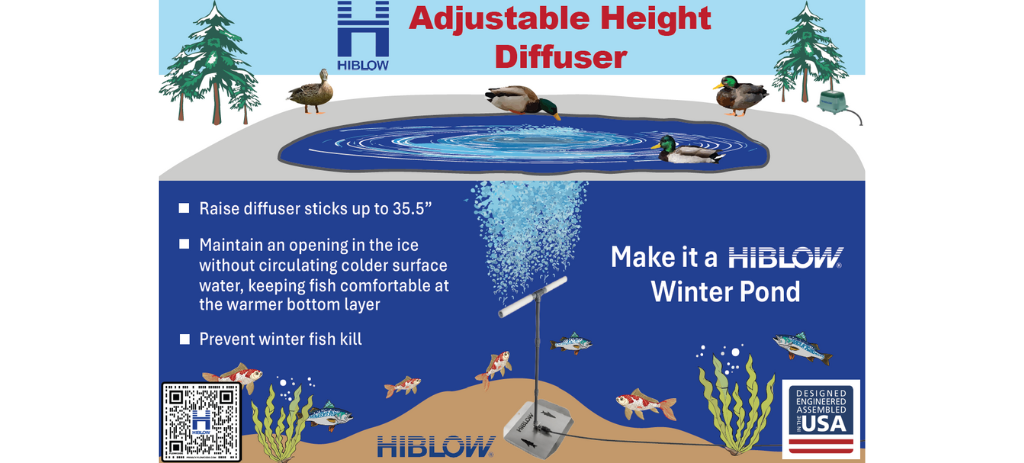Spring pond aeration is crucial to maintaining the health of your pond.
HIBLOW USA recommends pond aeration 24/7, 365 days a year, particularly if fish health and water clarity are a priority. If your pond freezes over for an extended period, oxygen levels will diminish which can cause fish kill and prevent muck from decomposing. For more information about what’s happening under the ice and the benefits of winter aeration, check out the following article: https://www.hiblow-usa.com/2021/01/25/pond-aeration-winter/
Taking initiative at the beginning of the spring is imperative to the health of the pond in the summer. The two primary ways that a pond receives oxygen are from plants and the atmosphere. Water circulation from a HIBLOW aerator evens out oxygen levels and temperature and pushes water to the surface where it absorbs oxygen. In addition to breaking down organic matter or muck, a healthy aerobic environment early in the spring helps combat the increasing levels of ammonia as life in the pond starts a new. Excess nitrates – the bi-product of ammonia – is food for plants, but also algae. Subsurface aeration is a great tool to prevent and combat algae blooms.
Read more about spring pond aeration on our website!
If you do not plan on aerating your pond during the winter, we recommend preparing the pond the best you can in the fall. Remove leaves, twigs, branches, and other matter floating in the water as winter nears. Rake dead plants and leaves from the shore to prevent them from blowing into the water. The less decomposition happening at the bottom of the pond, the less chance that oxygen levels will deplete to harmful levels. It is best to move the HIBLOW air pump inside if it is not running in the winter.
Contact us today for more information!









No comments:
Post a Comment